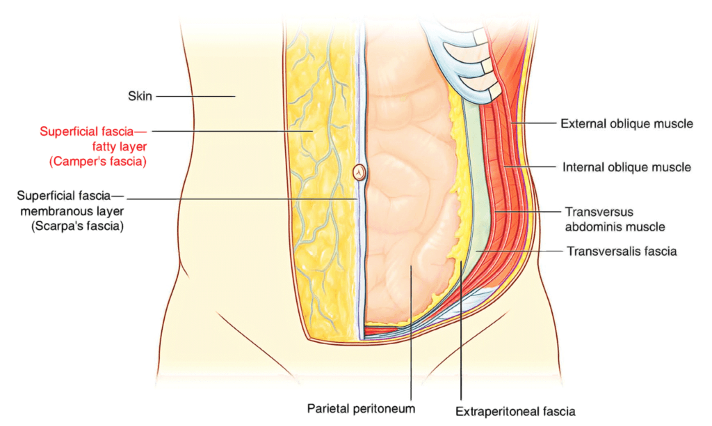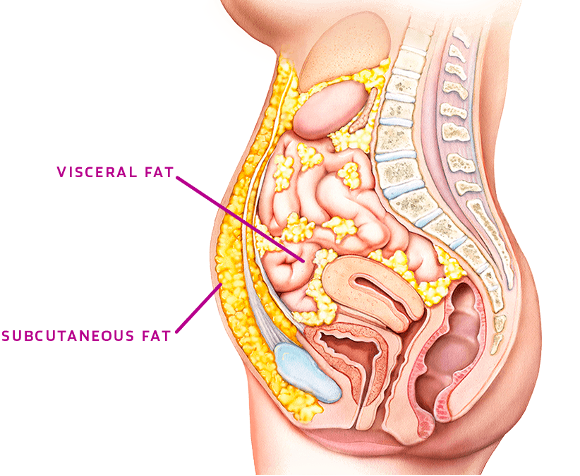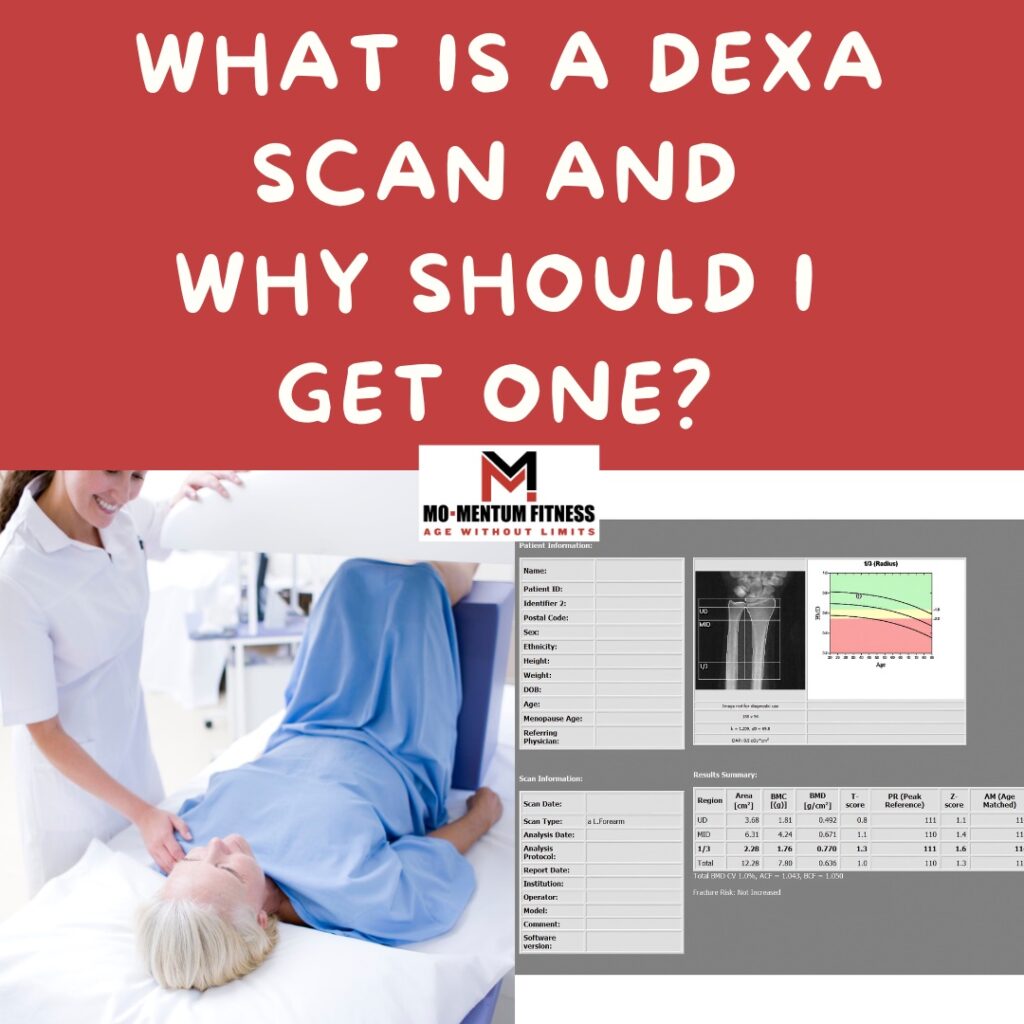Not all Fat Is Created Equal: What a DEXA Scan Reveals About Your Body Fat and Your Overall Health
By Amanda Mittleman M.S.
The DEXA Scan Shows You How to Age Without Limits
In the 28 years I’ve worked as a fitness professional, I’ve heard countless people say, “Getting older sucks!” So when I got past the age of 40, I felt embarrassed to tell people my age. I was worried, getting older would limit my vision for my life.
That’s why at Mo-Mentum Fitness in Huntington Beach, our mantra is “Aging Without Limits.” We want you to never be ashamed of your age and to know aging poorly is your own choice. How we age is predominantly up to each of us!
To feel like your best self as you age, your body composition is key. The more muscle you have the healthier you will be overall. It’s also vital to understand how too much body fat, especially in the wrong places, is impacting your health.
But how are you supposed to find out how much fat you have in your body? If that fat, is the inflammatory fat? How much fat is too much fat? I mean sure, there’s the embarrassing skinfold caliper test that your middle school PE teacher would bust — in front of the boys. 😒 But that’s medieval compared to the sophistication of the bioelectric impedance (InBody) and the gold standard, medical grade DEXA Scan.
Developed at the Mayo Clinic, the DEXA Scan (Dual-Energy X-Ray Absorptiometry) is the Gold Standard and medical grade tool for getting a baseline on your health and understanding your fat levels.
The DEXA Scan provides you with a wealth of information about:
- Your bone density
- Body composition
- Overall health
And when it comes to something as critical as your FAT LEVELS, it tells you things other tools can’t, like:
- Visceral Fat Measurement
- Health risk assessment
- Your progress in losing fat
- Nutrition Planning
So if you’re concerned about your body fat levels and aren’t sure where to go for answers, this blog is for you. We’ll discuss:
- The importance of taking responsibility for your health
- the different types of fat and why you should care
- why it’s important to know your fat levels
- How a DEXA Scan helps you achieve healthy fat levels
We’re so excited to announce that we’ll have a DEXA Scan at Mo-Mentum Fitness on November 11, 2023. At the end of the blog, we’ll talk about how you can make an appointment to secure your spot.
But first, let’s dive into why it’s crucial to take steps today to level-up your health.
Taking Responsibility For Your Health
When a few of my friends from high school didn’t make it to the age of 50, I realized something. I was afraid my increasing age would make me less valuable, especially as a woman.
But these dear friends taught me that it’s an honor and a gift to age!
And while you can’t necessarily control when you’re going to die, you can control how you age and the quality of your life. Because as you age, the quality of your life is a result of your everyday decisions.
When these decisions are not-so-great, they compound and keep us unhealthy. They lower our energy, increase our body fat levels, and lead to a host of problems, including:
- Chronic illnesses
- Type II diabetes
- High blood pressure
- heart disease
However, here’s the good news. In the almost thirty years I’ve been helping people create their most vibrant health, I’ve learned that our outcomes — or limitations — from poor decisions are not permanent.
At this point, you might be wondering about genetics. Don’t they play into your health outcomes and limitations?
They do, but not as much as you might think. Let’s take a look at how genetics factor into your overall health.
Genetics vs. Lifestyle
You may be thinking, “My high blood pressure is genetic.” And this may be true. But whether your health issues are your fault or not (genetic), the outcome is 100% your responsibility.
Nobody is coming to save you, especially the pharmaceutical companies. To clarify, I’m not against taking medications. It’s just that if we aren’t taking responsibility for our own lifestyle decisions, medicine is a Band-Aid that comes with lots of side effects.
And some of those side effects lead to more medications.
I believe most of us have a genetic connection to at least one chronic disease. Obesity, Type II diabetes, high blood pressure, and heart disease are unfortunately popular in my family genes.
However, did you know that genetics only contribute about 25% (on the high-end) to our overall health outcomes?
👉While our lifestyle has at least a 75% impact on our overall health! 👈
Unfortunately, too many Americans are still concerned with losing weight on the scale, instead of aiming for the healthier goal of decreasing fat and increasing muscle.
In this next section, we’ll discuss why starting today toward that goal is so important.
The Time to Start is Now
Many women want to look thin and petite, and they’re concerned that if they try to build muscle, they’ll get “bulky.” But don’t worry. At Mo-Mentum Fitness, our world-class trainers tailor your workout plan to help you reach your specific goals.
If you’re wanting to lose fat and increase muscle, the time to start is today! As we age, it’s harder to build and maintain muscle. So the age you’re at today is the best age to start building and maintaining your muscles to live better for longer.
I mean seriously, when’s the last time you heard someone over the age of 60 say, “Dang! I wish I had less muscle and less strength.”?
As you work toward decreasing your fat and building muscle, it helps to understand what kinds of fats you have in your body. Let’s go ahead and dive into how your body fat impacts your health.
Understanding the Different Types of Body Fat
Today, the people who walk in our Big Red Doors at Mo-Mentum Fitness in Huntington Beach are usually inquiring about two things:
- Being healthier overall
- Weight loss
Most of us understand that weight loss is an excellent side effect of exercising regularly and eating clean. And with that weight loss comes fat loss. It’s not beautiful, but even more of us know high body fat is linked to inflammation. Which is linked to a myriad of chronic diseases.
But what kind of body fat? Did you know you have different forms of fat on your body? Not all of our fat is created equally. Some fat is more inflammatory and linked to chronic disease than other fat.
The two main types of fat we’ll be talking about in this blog today are:
- Subcutaneous fat. This is the fat between your skin and your fascia.
To give you a visual, fascia is the white film you see on raw meat before you cook it. It surrounds your muscles and encapsulates the area where your organs live. Fascia is vital for our body to move, but that’s a topic for another day.
- Visceral fat. This fat is beneath your fascia and surrounds your vital organs. It’s around the gut, liver, kidneys, and spleen. Even worse, it can even be found in the pericardium — the sac surrounding the heart
 Image credit: earthslab.com
Image credit: earthslab.com
As I’m sure you can guess, visceral fat is not good fat. Let’s talk about why it’s so bad.
Visceral Fat: the Silent Threat
In a perfect world, we wouldn’t simply get on a scale to measure our weight loss progress. Instead, we’d measure and track our body fat. We want to know the percentage of our overall fat that is visceral fat.
Visceral fat is linked with metabolic disease.1 So we want to stay on top of knowing how much visceral fat we have on board. The lower the better.
There are standard reference ranges for visceral fat in healthy people. But according to reference values derived from both healthy European men and women and U.S. adults ages 18-81, healthy visceral fat ranges are approximated to be less than 1 kg (2.2 pounds) for younger people and between 1-2 kg for older adults. 2, 3, 4
Why Subcutaneous Fat is Not Your Enemy
Total body fat is the sum total of all the fat (adipose tissue) in your body. And most of your body fat is subcutaneous fat, the stuff you can see and feel right under your skin. This is where you want to be storing most of your fat.
It’s subcutaneous fat that’s allowed our species to thrive and evolve. Let me explain.
For most of our existence, starvation was one of humanity’s biggest threats to life. Our ability to store large amounts of energy in our subcutaneous fat kept us alive.
Here’s where genetics comes into play again. I wish I had known this when I was a teenager. I couldn’t figure out why my friends could eat hamburgers and donuts without gaining an ounce. But why a donut magically appeared on my thighs the very day I ate it!
So now you understand the two main types of body fat. Next let’s discuss how subcutaneous fat becomes visceral fat.
We All Have a Genetic “Bathtub” to Store Fat
We all have a genetically predetermined capacity for how much fat we can store. Think of it like this: we each have a specifically sized “bathtub” for storing fat (subcutaneous fat).
Some of us have bigger bathtubs, while some have smaller bathtubs. Some of us have a big enough bathtub to store the extra fat. For those with smaller bathtubs, that extra fat spills over.
When your subcutaneous fat bathtub is full and spills over, the excess fat is shuttled to your organs, where it becomes visceral fat. This excess fat is the most harmful form of fat storage.
Remember when we talked about where visceral fat is stored? Around your most precious organs — liver, kidneys, spleen, pancreas, and pericardium (the sac around your heart).

In short, it’s not the subcutaneous fat in your bathtub that will kill you. It’s the visceral fat overflowing OUT of your bathtub that’s going to lead to serious problems such as:
- Chronic disease
- Misery due to low energy
- Cardiovascular problems
- Metabolic problems
- Early death
In this next section, we’ll discuss in more detail why visceral fat is so deadly.
A Closer Look at Unhealthy Visceral Fat Numbers
Let’s say you’re a 30-year-old woman who weighs 120-pounds. You have about 28% body fat, which is about 35 pounds. If just 2 of those fat pounds were visceral fat, you would be in the 97th percentile.
🫣In other words, you’d have more visceral fat than 97% of the population! 😱
You’d be at very high risk of developing a chronic disease like:
- Type II diabetes
- High blood pressure
- Heart disease
- Certain types of cancer
In this example, just a tiny fraction of fat overflowing into your visceral fat stores is actually devastating for your health.
In this next section, we’ll examine why size isn’t necessarily the best measurement of health.

Challenging the “Skinny-is-Healthy” Myth
One of the problems with our narrative today is we believe “skinny” is healthier. You and I know adults who eat like 4th graders and don’t gain weight. To be fair, no disrespect to 4th graders or adults who eat like them!
The fuel you put into your body makes up the quality of the cells in your organs — everything your body is made of! That’s why junk food equals not-so-healthy insides.
In fact, there is a huge rise in “thin” people being diagnosed with Type II diabetes, high blood pressure, fatty livers, and more. If you’re not exercising and eating real food, being skinny isn’t healthy.
How Do I Find Out How Much Visceral Fat I Have Now?
Understanding what changes are happening in your body due to exercise and eating habits is essential to make the right changes.
Currently, we use InBody (bioelectrical impedance) at Mo-Mentum to measure the skeletal muscle mass, total lean body mass, and total body fat mass in our clients. I absolutely LOVE our InBody because it helps our members understand that their weight on a scale is only a number.
The InBody does everything we need to help us guide our members. Except for one thing. It can’t differentiate visceral fat.
The DEXA Scan is the Gold Standard tool used by medical, fitness and nutrition experts to measure your unhealthy visceral fat and bone density.
📣This leads me to an announcement I’m so excited to share with you!
On November 11, 2023, we are going to have a DEXA scan company come to Mo-Mentum Fitness in Huntington Beach from 11:00 am to 4:00 pm. We have 20 spots open for DEXA scans that day, and about 10 of the 20 spots are already taken up. Keep reading to find out how to sign up today!
When doctors prescribe DEXA scans for their patients they can only prescribe for bone density. Even though your visceral fat reading is right there on the scan, you can’t get those results. But Mo-Mentum is so committed to helping you achieve your most vibrant health, we’re offering each scan for only $100 per scan.
The DEXA Scan Helps You Take Action for a Healthier Future
Now that you know how devastating visceral fat is for your health, don’t let this incredible and affordable opportunity to find out your visceral fat levels pass you by.
When you receive your results of the DEXA Scan, we make a copy and then help you understand your body fat levels. Then we work together to define the exercise and nutrition program best for you to lower your visceral fat and most likely increase your muscles mass (your fountain of youth and health). This is the program that helps you age without limits.
Some of you will find that your visceral fat numbers are in the healthy range. This is a great baseline so that in the future you can check in again to make sure you’re still within that healthy range.
The trainers at Mo-Mentum Fitness in Huntington Beach will be with you every step of the way. With your custom exercise and nutrition program, you’ll be armed and ready to reduce any extra visceral fat you may have. Which leads to you living your best life!
We’ve only got 20 spots available for our DEXA scans on November 11, 2023 from 11:00 am to 4:30 pm.
We’re scheduling 15-minute appointments starting today. Click here to sign up. Or give us a call or text us at (714) 266-1441.
Don’t wait to secure your spot. What we measure can change your life for the better!
References
1- Huffman DM, Barzilai N. Contribution of adipose tissue to health span and longevity. Interdiscip Top Gerontol. 2010;37:1-19. doi: 10.1159/000319991. Epub 2010 Aug 10. PMID: 20703052.
2- Hirsch KR, Blue MNM, Trexler ET, Smith-Ryan AE. Visceral adipose tissue normative values in adults from the United States using GE Lunar iDXA. Clin Physiol Funct Imaging. 2019 Nov;39(6):407-414. doi: 10.1111/cpf.12593. Epub 2019 Oct 1. PMID: 31449721.
3- Miazgowski, T., Kucharski, R., Sołtysiak, M., Taszarek, A., Miazgowski, B., & Widecka, K. (2017). Visceral fat reference values derived from healthy European men and women aged 20-30 years using GE Healthcare dual-energy x-ray absorptiometry. PLOS ONE, 12(7), e0180614. https://doi.org/10.1371/journal.pone.0180614
4- Ofenheimer A, Breyer-Kohansal R, Hartl S, et al. Reference values of body composition parameters and visceral adipose tissue (VAT) by DXA in adults aged 18-81 years-results from the LEAD cohort. European Journal of Clinical Nutrition. 2020 Aug;74(8):1181-1191. DOI: 10.1038/s41430-020-0596-5. PMID: 32123345; PMCID: PMC7402993.
5-Peter Attia Podcast notes. https://peterattiamd.com/ama40/








